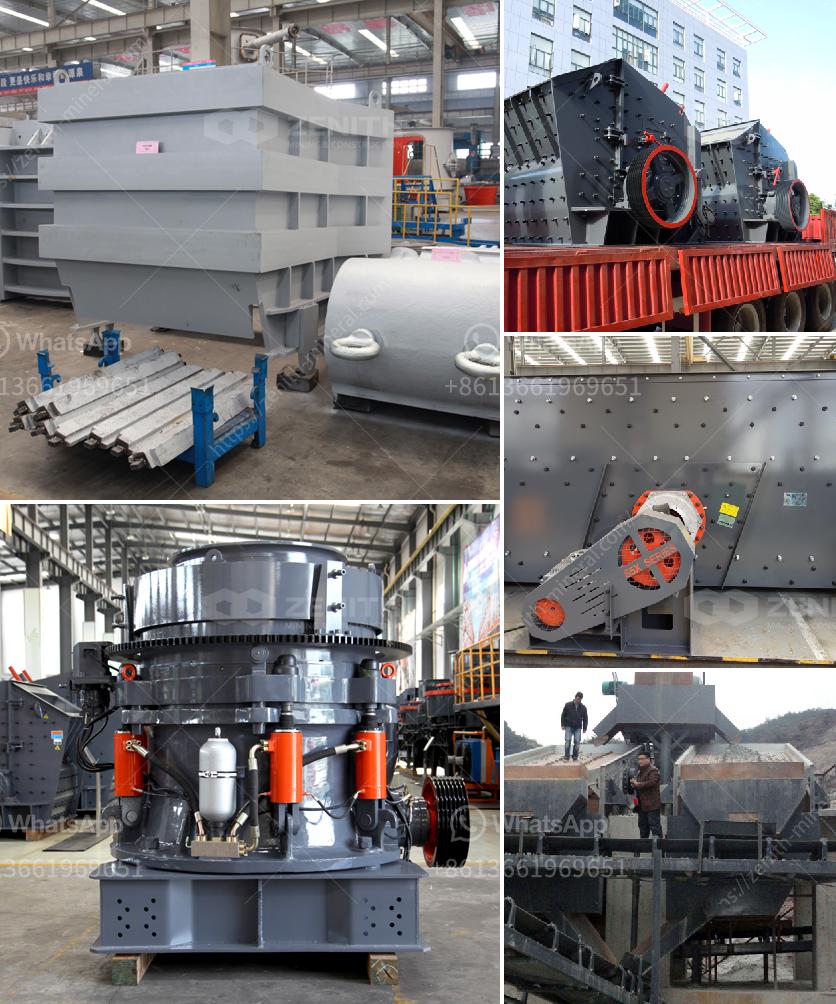A portable crusher, also known as a mobile crusher, is a machine designed to reduce large rocks into smaller rocks, gravel, or rock dust. It is a crucial piece of equipment in the mining, construction, and recycling industries. The primary advantage of a portable crusher is its mobility, allowing it to be moved to different locations as needed. Here’s a detailed explanation of how a portable crusher works:
Components of a Portable Crusher
- Chassis: The base frame that supports all other components. It is usually mounted on wheels or tracks to facilitate movement.
- Feeder: A device that regulates the flow of material into the crusher. It ensures a consistent and controlled feed rate.
- Crusher: The main component that performs the crushing action. There are different types of crushers, such as jaw crushers, cone crushers, impact crushers, and gyratory crushers.
- Conveyor Belts: These transport the crushed material from the crusher to the next stage of processing or to a stockpile.
- Screening Unit: Often included to separate crushed material into different size fractions.
- Power Source: Typically a diesel engine or electric motor that powers the crusher and other components.
Working Principle
- Material Feeding: Raw material is loaded into the feeder, which regulates the flow of material into the crusher. The feeder can be a vibrating feeder or a belt feeder, depending on the design.
- Primary Crushing: The material enters the crusher chamber, where it is subjected to compressive forces. In a jaw crusher, for example, the material is crushed between a fixed jaw and a moving jaw. In an impact crusher, the material is struck by rotating hammers or blow bars.
- Secondary Crushing (if applicable): Some portable crushers have multiple stages of crushing. After the primary crusher, the material may pass through a secondary crusher for further size reduction.
- Screening: The crushed material is conveyed to a screening unit, where it is separated into different size fractions. Oversized material may be returned to the crusher for further reduction.
- Discharge: The final product is discharged from the crusher and transported via conveyor belts to a stockpile or directly to the next stage of processing.
Mobility and Setup
- Mobility: The portable crusher can be moved to different locations using its wheels or tracks. This is particularly useful in mining operations where the crusher needs to be relocated as the mining face progresses.
- Setup: Setting up a portable crusher involves positioning it at the desired location, ensuring it is level, and connecting it to the power source. The feeder, crusher, and conveyors are then aligned and calibrated to ensure efficient operation.
Advantages
- Flexibility: Can be easily moved to different sites, reducing the need for material transportation.
- Cost-Effective: Reduces transportation costs and can be set up quickly, minimizing downtime.
- Versatility: Can handle a variety of materials and can be configured for different crushing and screening applications.
- Efficiency: Modern portable crushers are designed to be energy-efficient and have high throughput capabilities.
Applications
- Mining: Crushing ore and rock at the mining site.
- Construction: Crushing demolition waste, concrete, and asphalt.
- Recycling: Processing recyclable materials like concrete and asphalt.
- Quarrying: Crushing stone and aggregate for construction projects.
In summary, a portable crusher is a versatile and efficient machine that plays a vital role in various industries by reducing large materials into smaller, manageable sizes. Its mobility and ease of setup make it an invaluable tool for on-site crushing operations.


